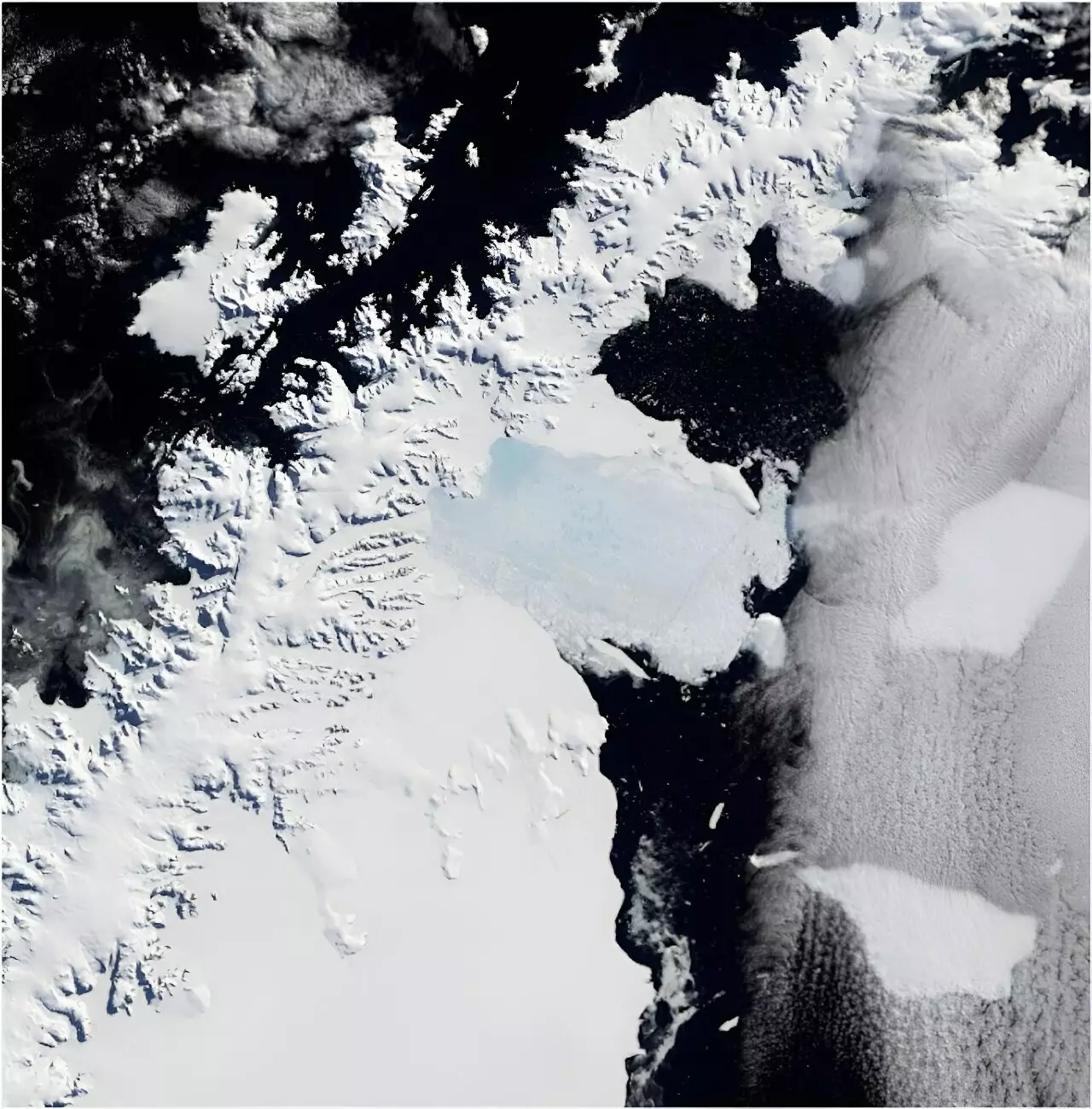In March 2002, a seismic event occurred beneath the Antarctic ice that shook the foundations of climate science: the Larsen B Ice Shelf collapsed abruptly, disintegrating into a mass approximately one-sixth the area of Tasmania. This catastrophic event serves as a stark alarm bell for the global community, signaling the cascading effects of climate change on our planet’s systems. The delicate balance of Antarctica’s ice is not merely a regional concern; it encapsulates the fate of coastal cities worldwide as sea levels rise in response to accelerating ice melt.
Unraveling Historical Data
In an enlightening recent publication in *Scientific Reports*, researchers harnessed nearly 1,000 photographs taken in the 1960s to unveil the state of five significant glaciers in the Larsen B region prior to its failure. This retrospective analysis allows us to decode the glaciers’ dynamics, providing vital information about their contributions to the historical and ongoing rise in sea levels. Through this lens, the familiar narrative of thermostatic shifts in Antarctica transforms from abstract theories into measured realities that underscore the urgency of the climate crisis.
From Ice Shelves to Sea Levels
While the typical perception may attribute direct sea-level rises to the melting of ice shelves, the truth reveals a more complex interaction. Ice shelves act as natural barriers that stymie the flow of glaciers into the ocean. When these shelves fail, the glaciers they once restrained are released, leading to accelerated melt rates that contribute directly to rising sea levels. For example, following the Larsen B breakdown, scientists calculated that glaciers shed approximately 35 billion tons of ice, generating an equivalent rise of about 0.1 millimeters in global sea levels. While this figure appears minor on the surface, it amplifies into a significant volume when viewed in the context of continuous and widespread glacial retreat.
The Challenge of Data Collection
The remoteness of the Antarctic landscape poses significant challenges for data collection. The compact geographic reach of this icy realm means that many areas remain shrouded in obscurity, rendering direct measurements time-consuming and prohibitively expensive. As a result, scientists increasingly lean on satellite technology, yet the persistent cloud cover hovering over regions like the Antarctic Peninsula often hampers these observations. This backdrop underscores the immense value of historical visual archives—an untapped goldmine offering insights into decades past.
Photogrammetry: A Tool for the Future
One innovative approach has emerged from historical photography: photogrammetry, which translates overlapping images into detailed, scaled 3D models. Traditional photogrammetry relies on two images to yield depth perception, akin to the human experience. However, modern computation now allows for the amalgamation of hundreds of images, significantly enhancing the fidelity of the resulting models. By pinpointing identifiable features—like mountain contours or distinctive rock formations—researchers can establish GPS coordinates that contextualize the glaciers’ transformations over time.
The Stakes of Climate Change
As researchers scrutinized the state of five glaciers both before and after the Larsen B collapse, they observed that these massive ice formations remained largely unchanged prior to the catastrophe. However, the events following the disintegration have introduced an unprecedented level of risk. A staggering loss of 35 billion tons from one glacier alone poses a prescient warning: the stability of Antarctica’s remaining ice shelves hangs in delicate balance, threatened by rising ocean and atmospheric temperatures.
The historical image archive of nearly 300,000 photos meticulously gathered by U.S. Navy cartographers between 1946 and 2000 serves not just as a record of past conditions but as a critical resource for monitoring future changes. Such invaluable perspectives will assist not only in tracking glacial dynamics but also in understanding shifts in ecosystems, coastal landscapes, and communities defined by their proximity to these frozen fortresses.
Expanding Horizons: A Call to Action
These historical images and the technological advancements developed from them provide crucial opportunities for climate scientists to deepen their understanding of the interconnections within Earth’s systems. As we navigate an era increasingly characterized by abrupt climatic shifts, the archive represents a powerful tool waiting to be employed in diverse fields of study—from glacial research to investigating human impacts like urban expansion.
The Larsen B Ice Shelf’s collapse is more than an isolated event; it is a clarion call for immediate and sustained action. Opportunity beckons for the global community to tap into the wealth of information awaiting discovery within our historical records and utilize it to forge a path toward a more resilient and informed future in the face of climate adversity.

